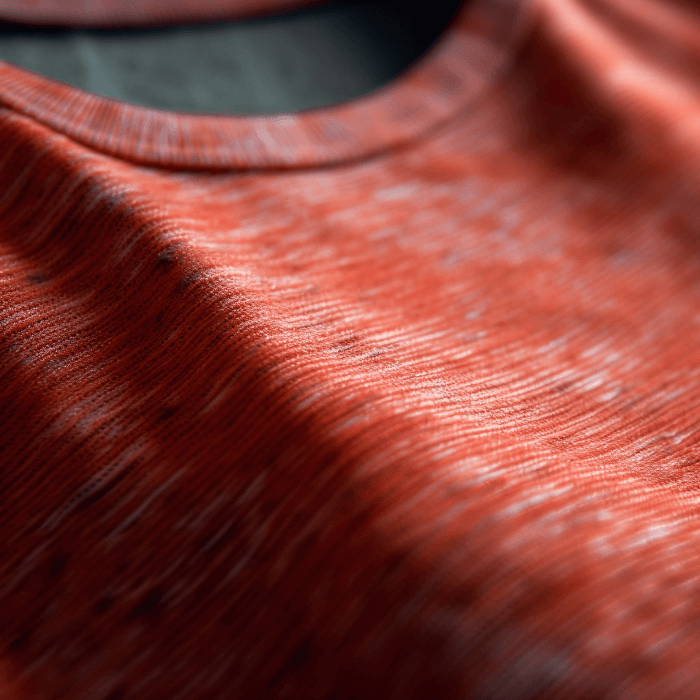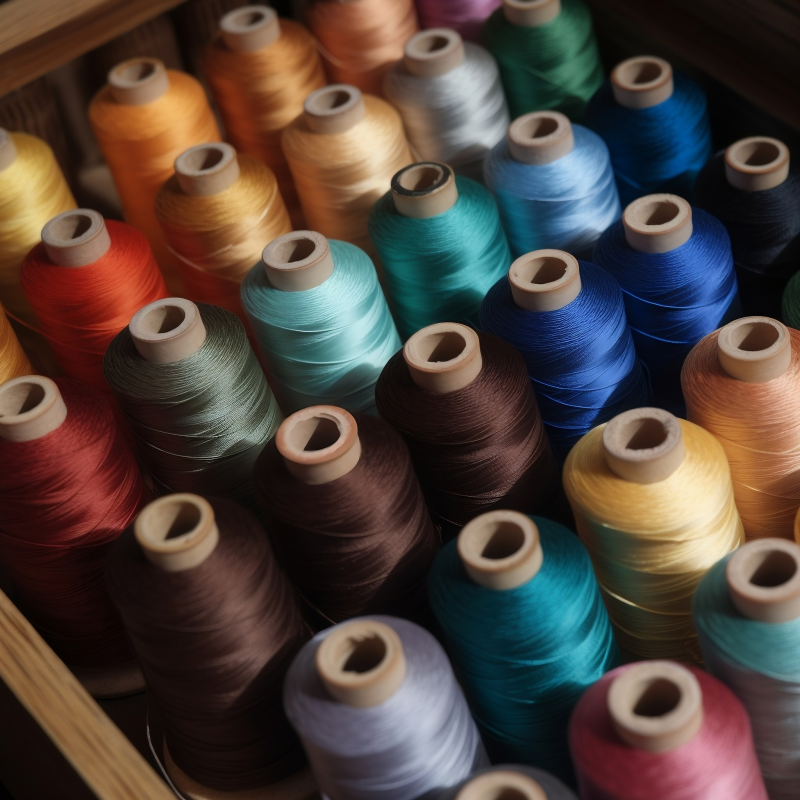Weight of a shirt – it’s a crucial aspect that directly influences the quality and comfort of a T-shirt, but unfortunately, it’s often brushed aside. For those of us in the T-shirt business, mastering this subtle yet vital component is absolutely essential.
The weight of a T-shirt isn’t just about size and cut – it’s primarily about the fabric used. Whether measured in ounces per square yard or grams per square meter (GSM), fabric weight tells you a lot about the T-shirt. Heavier materials often translate into thicker, more robust T-shirts.
Welcome to our comprehensive t-shirt weight guide, where we go through the ins and outs of T-shirt fabric weight and its impact on your business.
Knowing about tshirt weight is not as simple as it sounds. You might think you’re getting a heavyweight T-shirt, when actually it’s just a shirt with a heavy print or design. It’s a maze of confusing terms and details out there. The good news? You’re not alone. We’re here to untangle the complexity and ensure you’re fully equipped to make informed decisions for your shirt business. Let’s dive in!
The Effect Of Fabric Material On T-Shirt Weight
Manufacturers make T-shirt fabric from fibers spun into yarn and woven or knitted into fabric. The fibers can either be natural, synthetic or blend the two. Manufacturers identify the material by weight (in grams per square meter or ounces per square yard) or thread count.

Thicker yarn results in thicker material, which is usually heavier than thinner material. However, synthetic fibers are often hollow and can be both thicker and lighter than thinner natural fibers.
How T-Shirt Fabric Weight Is Measured
The industry generally measures the weight of T-shirt fabric in metric units, grams per square meter (GSM).
Higher GSM values indicate thicker fabric, provided one is dealing with the same material. Do not compare polyester to cotton in weight, and expect to be able to infer differences in thickness.
Sometimes the fabric is still measured in ounces per square yard, sometimes simply called ounces.
A rough equivalence guide between ounces per square yard and grams per square meter is as follows:
Lightweight T-shirt fabric: 4 ounces per square yard/135 GSM
Medium weight fabric 5 ounces per square yard/170 GSM
Heavyweight (thick) fabric: 6 ounces per square yard (or more)/200 GSM (or more)
T-Shirt GSM Guide Chart
| GSM | Fabric | Common Use |
| 67 | Hollow Fibre Fabric | Top and Backing backing of quilts |
| 135 | Lightweight Cotton | Shirts |
| 196 | PVC Netting | Nets and screens |
| 237 | Quilted Waterproof Fabric | Outdoor clothing |
| 275 | Jute Cloth Hessian Fabric | Bags |
| 407 | Denim Fabric | Jeans |
| 700 | Melton Wool Fabric | Coats |
In general, the best gsm for t shirt is a mid-weight GSM (around 150 – 180). This allows the shirt to be versatile for many uses and climates.
T-Shirt Weight Calculator
The Suitability Of Different Weights Of T-Shirt Fabric
The weight of the T-shirt fabric is suitable for different types of T-shirts.
Cotton Shirt Weight Chart:
| Type | Weight |
| Lightweight T-Shirt | 3-5 Ounces |
| Medium Weight T-Shirt | 5-6 Ounces |
| Heavyweight T-Shirt | 6-7 Ounces |
Let’s examine these differences.

Lightweight T-Shirt Fabric Is For Summer
Lightweight T-shirt fabric is thinner and lighter and is preferable for summer because it is often more breathable in hot weather. On rainy days, it may be more transparent. It dries more quickly but wrinkles more easily (especially cotton or linen) and may be prone to shrinkage.
Fabrics such as lyocell or rayon are less transparent than cotton in lightweights. It is lighter to ship and may therefore cost less to ship. A lightweight summer T-shirt will be made of 130-150 GSM fabric.
Two popular lightweight cotton t-shirts are Bella Canvas 3001 which is 4.2 oz/yd², and Next Level 3600 which is 4.3 oz/yd².
Medium Weight T-Shirt Fabric Is For Mid-Season
Medium weight T-shirt fabric is generally warmer than lightweight material, offering more protection from the wind and being less transparent, even when damp. It takes longer to dry but typically wrinkles less.
It makes for a good mid-season or year-round shirt and will be made of 160-180 GSM fabric.
The Gildan 5000 “Heavyweight” shirt is actually only a mid-weight 5.3 oz/yd² shirt.
This is usually considered the best fabric weight for t shirts as they offer a good balance of durability and breathability, which makes them suitable for everyday use.
Heavyweight T-Shirt Fabric Is For Winter
Heavyweight T-shirt fabric can vary in texture from soft and brushed to coarse. It tends to be opaquer. It takes longer to dry but is more resistant to shrinkage. Because they are warmer, they are more suited for cooler fall or winter weather or work wear.
Heavier shirts typically have sturdier stitching. They can go as high as 225 GSM in fabric weight.
The Gildan G200 Ultra Cotton T-shirt is a 6.0 oz/yd² heavyweight shirt.
Premium Weight T-shirts
Because higher GSM fabric takes more fiber to make, it costs more and is used for premium T-shirts.
This trend only holds good up to a point, with 160-180 GSM being the sweet spot for premium T-shirt fabric weight. Other factors such as fiber length will also play a role in determining whether or not a T-shirt is considered premium or not.
Cheap promotional shirts designed to be worn only a few times will be around 100-110 GSM.
How Much Does a Hoodie Weigh?
In ounces, a standard hoodie weighs 16 oz. to 25 oz. In lbs, a standard hoodie weighs 1.2 to 1.5 lbs.
Manufacturers make hoodies and sweatshirts of much heavier, fleecy material, which weighs 200-250 GSM for a summer weight, 250-300 GSM for an all-year weight, and 300-400 GSM for a heavy, snug winter fabric.
How Much Does A T-Shirt Weigh?
The weight of T-shirt fabric plays a significant role in determining the overall weight of the shirt, although other factors also play a role. Larger shirts will weigh more for the same fabric weight; so will long-sleeved shirts, in both cases because they use more material.
Pockets will also add to the weight of the shirt. Men’s shirts also typically weigh slightly more than lady’s shirts. The typical T-shirt weighs between 3 ounces (85 grams) and 7 ounces (200 grams).
When determining the thickness of a shirt, remember that GSM or ounces per square yard are an actual weight of the fabric, whereas if you get a weight quoted for the shirt as a whole, the size and style will determine whether it is lightweight or heavyweight shirt.
When ordering, try to get hold of information on the GSM of the shirts. If you can only get information on the total weight of the shirts, you will have to figure out yourself from the size and style of the shirt, whether it is lightweight or heavyweight or somewhere in between.
Shirt Weight Chart
The following table gives the weights of shirts from some popular T-shirt manufacturers in various sizes:
| Brand | XS | S | M | L | XL | 2XL |
| American Apparel | 3.68oz (104.3g) | 4.16oz (118g) | 4.58oz (130g) | 4.97oz (141g) | 5.5oz (156g) | 5.78oz (164g) |
| Gildan Softstyle Men’s | 3.76oz (106.6g) | 4.26oz (121g) | 4.86oz (138g) | 5.39oz (153g) | 5.67oz (161g) | 6.45oz (183g) |
| Gildan Softstyle Women’s | 3.37oz (95.5g) | 3.81oz (108g) | 4.05oz (115g) | 4.51oz (128g) | 4.97oz (141g) | 5.50oz (156g) |
| Fruit of The Loom | 3.57oz (101.2g) | 4.51oz (128g) | 4.83oz (137g) | 5.07oz (144g) | 5.64oz (160g) | 6.10oz (173g) |
When shipping shirts to customers, bear in mind that the packaging will also weigh, and depending on the printing method you have used, the image on the shirt may also have added slightly to the weight. Digital printing adds less weight than screen printing, which adds less than a heat transfer.
What are T-shirt Singles?
T-shirt singles refers to the thread count of a t-shirt’s fabric. Lower-quality t-shirts are generally measured by 18 to 21 singles, while higher quality t-shirts have 32 singles or more. A higher t-shirt singles count typically equates to a “premium” t-shirt, which is less likely to wear or fade after washes.
Conclusion
Wrapping up, I can tell you from my own experience running a T-shirt business, the weight of a shirt really matters. It helps distinguish between a shirt that’s more affordable but won’t last long, versus one that’s high-quality and durable. This understanding is key to delivering the best to our customers.
Knowing about ounces per square yard or grams per square meter might seem a bit technical, but trust me, it really helps in getting the hang of T-shirt weight.
I’ve found the best way to truly understand shirt weight is to order a few shirts yourself, ranging from light to medium to heavy. It’s all about getting hands-on: feel them, examine them, and then decide which you think is best for your customers. After all, we’re in this business to make our customers happy, right?
FAQ
What is a good weight for t shirts?
A good weight for t shirts is 5-6 ounces, which is considered the medium weight.
How much gsm is good for t shirt?
150 to 180 GSM is the best for a t shirt.
How many oz does a shirt weigh?
A shirt typically weighs 3 to 7 ounces.
What is the heaviest t shirt weight?
The heaviest t shirt weight is 7 ounces.
Is 5 oz a heavy t-shirt?
A 5 Oz is not a heavy t-shirt, it is considered medium weight.
Bryan E. Robinson is the former owner of TshirtGrowth. He has sold t-shirts since 2006 through dropshipping, screen printing, vinyl printing, DTG, Print on Demand, and more. Bryan has created his own t-shirt designs through Photoshop, Canva, and other platforms, as well as worked with freelancers to create many of his designs. Besides t-shirts, Bryan has over 18 years of experience in online marketing with eCommerce, B2B SaaS, B2C products, and more.


